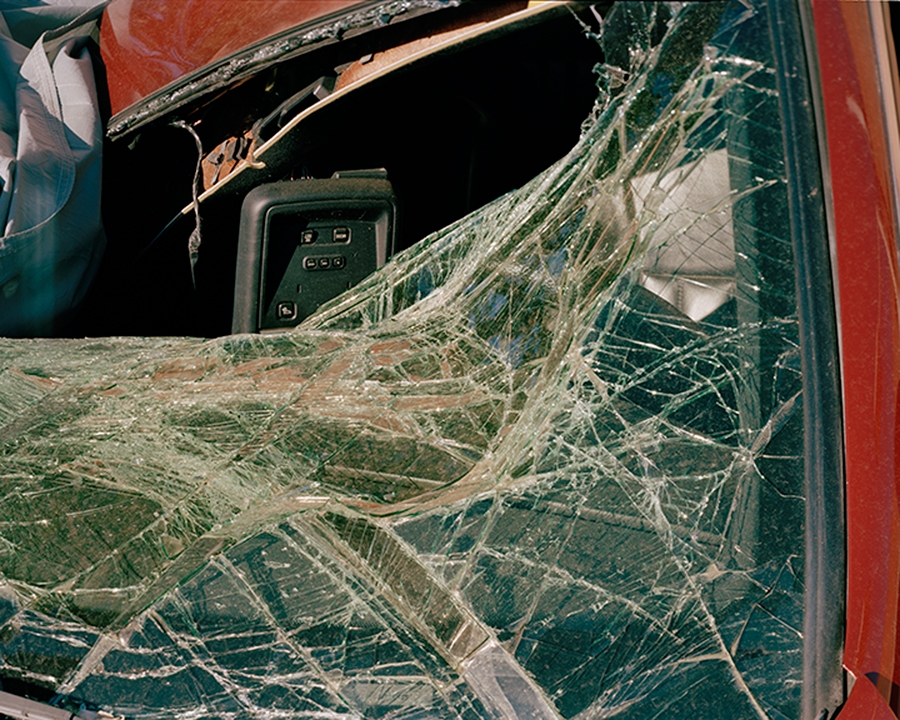With her young son onboard and a bed built into the back of her van, driving cross-country has long been part of Justine Kurland’s peripatetic artistic life. In This Train Is Bound for Glory (2009), she began to include references to her own roving existence in the cameo parts played by her bedraggled son and the brief appearance of their shabby van. With Sincere Auto Care, the maintenance of the van and the predominantly masculine spaces of automotive America are now the main subject of the work.
This also marks a temporal shift from the nineteenth-century mythology of the American West (trains, wilderness and hobos) to the nation’s defining twentieth-century motif of the motorcar and its twenty-first-century demise. The aged Cadillacs, Fords and Corvettes that appear across this series of photographs conjure up the everyday economics of use and reuse that form the messy afterlife of Detroit’s dying industry. Kurland describes the necessities and passion of a practice of ‘sincere auto care’ in the cut-price spaces of junkyards, low-cost custom paint jobs and aftermarket parts.
This masculine world is saturated with death and melancholia
This masculine world is saturated with death and melancholia. The aftermath of fatal accidents appears in numerous images, including the spewed guts of a car’s front end, Crash (2013), and the caved-in windshield of Death Seat (2012). The close-up view on a custom paint job of cackling skeletons amidst licking flames, Spray Fire Custom (2013), suggests male bravado in the face of death. And the street term for a car with a matt black paint job and blacked-out windows, Murdered Out (2013), points to an urban poetics of death, all in a photograph showing a laboured surface of supreme prosaic beauty.
These compressed spaces create an intimacy that is heightened by the sharp clarity of Kurland’s large-format camera. Her scenes of stillness and suspended activity demand an attitude of caring attention to the sensual tactility of the surface of the print. Many of these oil-stained spaces include tattooed male bodies, quietly working or caught in moments of solitary rest.
The lack of eye contact between photographer and these subjects marks the closed nature of the milieu. For Abigail (2014) is one of the few images that suggest the well-known sexualised decor associated with the world of men and cars. A pinup poster is visible in blurred vagueness, but Kurland keeps her camera’s focus on the tattooed skin of the mechanic turned away from us. The ‘Abigail’ of the photograph’s title is another figure of death, memorialised by a large winged crucifix tattoo, the name in tombstone filigree lettering spread across the man’s bared upper back.
The grimy child’s hand of Baby Tooth (2011), a closeup and sensually lit image of Kurland’s son’s palm cradling his broken tooth, suggests the boy’s affinity with the spaces of Sincere Auto Care, an affinity that his mother lacks. Perhaps the melancholic aura that permeates the whole series is less socioeconomic and more psychical, driven by the inevitable loss of her child as he enters the adult male world.
This article was first published in the December 2014 issue.
